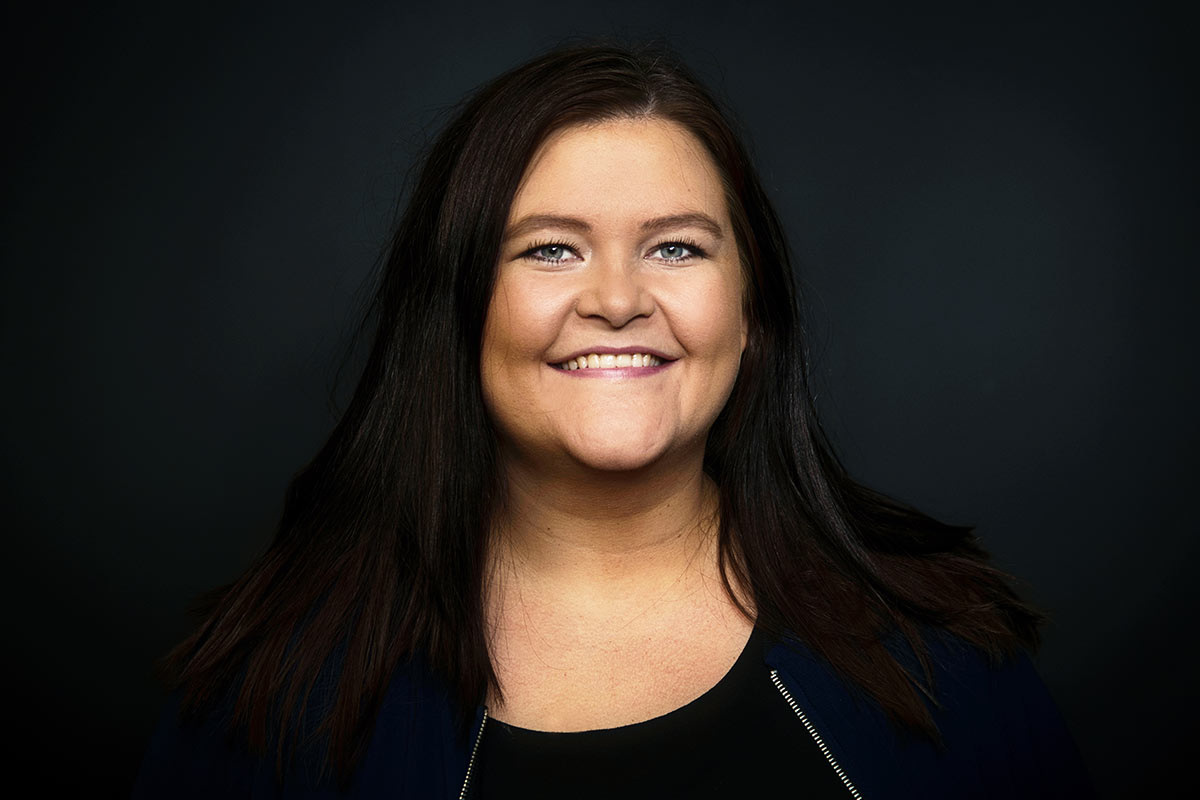
Meet our people
Camilla Brække is bringing Verdens Gang out in the public space, working with voice and visuals. Meet her, Fredrik Hammarstedt, Ida Nilsson and Martine Stolp – some of our Schibsted people.
What if you could get news from VG on screens in the subway or in the bus stand? Camilla Brække is head of a project for sound and visuals that’s looking into how to make VG more present in the public space. But it all started indoors.
“We were eager to provide news for Google Home Assistant, but soon realized that the audience is still very small in Norway. That’s when we changed focus and started working on a product that works on several platforms,” says Camilla.
Basically, her team is making daily video news broadcasts in a simple format that can be produced by just one person. There’s a camera at the VG news desk and a VJ can just start recording at any time.
The content has also changed as the project has moved forward. In the beginning they focused a lot on always being first to report, but then ended up with a lot of text on still pictures. Now they’re trying to simplify angles and messages to adapt to the format and the concept.
“We have a new type of infographic that is much more to the point. If we want to catch people’s attention out in the city, we need to be very direct,” Camilla explains.
At the moment the team is trying out the product on VG’s start page and soon it will be on Snapchat. But the overall goal is to move out into the city. When becoming more and more digital, newspapers like VG have lost presence outdoors, losing attention for their brands. This could now be about to change, with VG’s news displayed at train stations, airports and out in the city.
Camilla has enjoyed how the project has developed – from starting out with this one idea of content for Google Home to becoming something completely different and larger. “It is also very fun to focus on the visuals – and not least to be allowed to be a bit playful.”

Years in Schibsted: 1.5 My dream job as a child: Truck driver
Cooperation is key in the office
One morning when Fredrik Hammarstedt worked as facility manager at Telenor’s office in Stockholm, he sat opposite a man he had never seen in the subway. Not unusual you might argue. But when they both left the train at Slussen, it turns out they worked in the same office and had done so for years.
“The main reason why we have an office at all is to meet our colleagues. If you do so naturally on a day to day basis, the thresholds are a lot lower the day you’re going to collaborate,” says Fredrik.
He now has the same job at Schibsted in Stockholm. Fredrik believes that you need to look at offices in a holistic way. Starting with those basic questions about why we even have an office and how you create one that people really want to go to every morning. Collaboration is a keyword – as is culture, being agile and of course technology that enables you to do your work. One thing was very important to Fredrik to implement when he began.
“You need a human touch and a management system with a heart.
Filling out a form is not enough. That’s why we have floor managers who very quickly can assist the different needs from our different companies with a human touch.”

Years in Schibsted: 1.5 My dream job as a child: Hairdresser
“It’s important to teach kids about tech”
One week last June, the atmosphere in the Schibsted offices in Stockholm and Oslo changed completely – kids aged 8–12 years invaded the buildings. Kids Coding Camp is introducing kids to tech and coding and is arranged by the Talent Acquisition team at Schibsted. The concept was first arranged by Finn and now Schibsted is copying it with pride.
“I feel as if I have the world’s greatest job when working on this. It’s important to teach kids about tech – and not least to make girls see that it’s fun,” says Ida Nilsson, employer branding specialist and responsible for the project.
The kids work in a program called Scratch – which is a tool developed for children – and their teachers are students from KTH (the Royal Institute of Technology). On examination day they had created games, quiz, animations and much more.
“Already on the second day when I was hanging around and someone asked if I could help – I didn’t have a clue,” confesses Ida.
On this first camp, children of Schibsted employees were invited. Next time, in February 2020, it will grow to an external integration

Years in Schibsted: 6 My dream job as a child: An actress or
TV host on children’s television
Events that build loyalty
In a time when journalism needs new ways both of earning money and of building loyalty, the Norwegian newspaper Aftenposten is hosting events that reflect the editorial content. Martine Stolp is a producer for Aftenposten Event, and she is bringing the journalism out on stage.
“Our job is to help making sure that the readers Aftenposten have today stay on, recruit new readers and to raise turnover,” Martine explains.
Climate, tech, culture and news are the main themes. In December 2019 Aftenposten arranged a conference named ”Rethinking”, together with Schibsted. Famous guests like tech futurist Amy Webb and Alex Stamos, computer scientist and former Security officer at Facebook attended (read interviews with them on pages 10 and 15).
“I’m learning a lot from arranging these events – both in working with the editorial room and the expert speakers.”
Martine’s team will also arrange a sports event together with VG and they have developed masterclasses for Aftenposten for education on writing, presenting and podcasting.
“I think we could do even more on these themes across the whole of Schibsted, we have the skills,” says Martine.